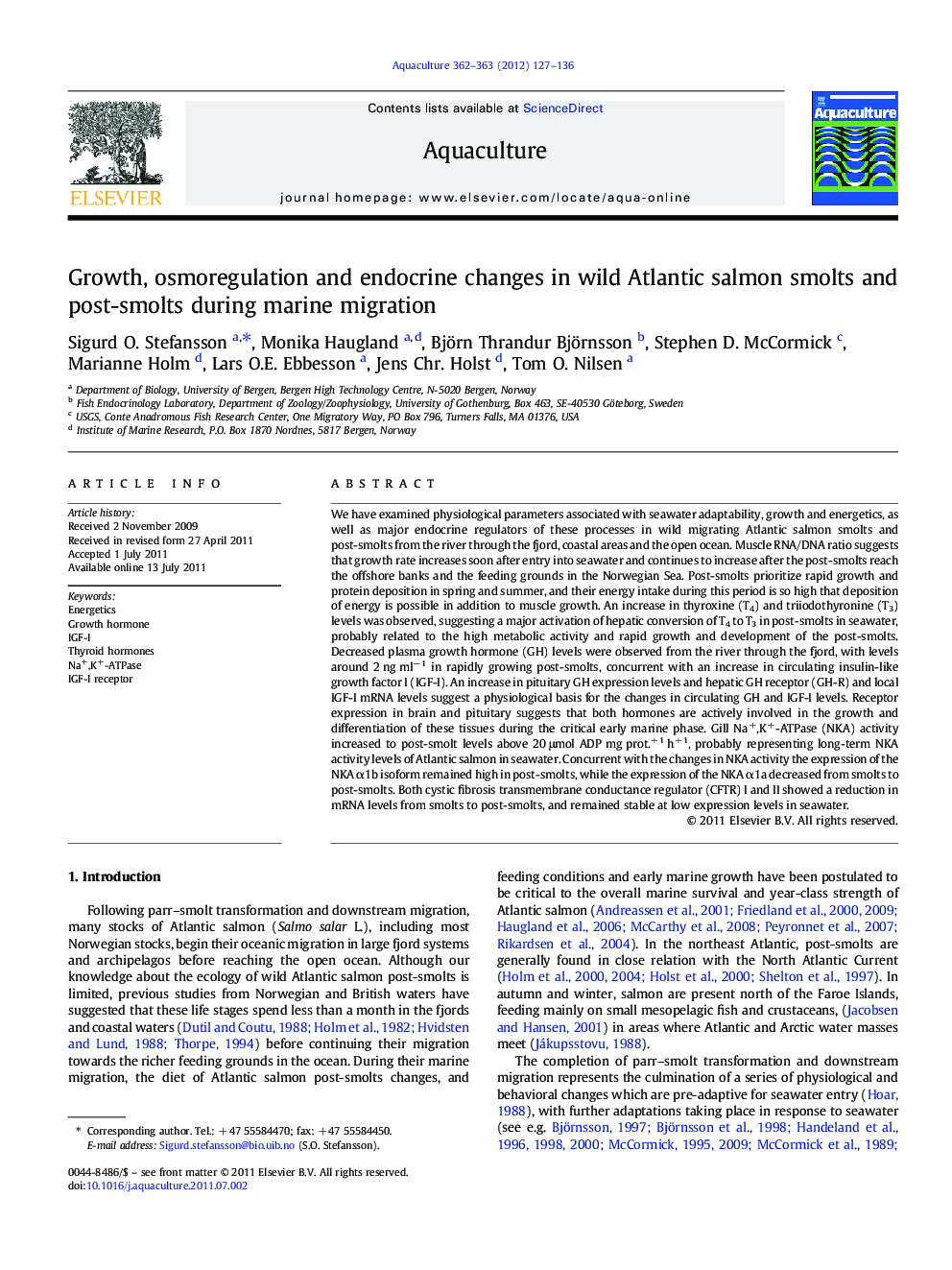| کد مقاله | کد نشریه | سال انتشار | مقاله انگلیسی | نسخه تمام متن |
|---|---|---|---|---|
| 2422331 | 1552885 | 2012 | 10 صفحه PDF | دانلود رایگان |

We have examined physiological parameters associated with seawater adaptability, growth and energetics, as well as major endocrine regulators of these processes in wild migrating Atlantic salmon smolts and post-smolts from the river through the fjord, coastal areas and the open ocean. Muscle RNA/DNA ratio suggests that growth rate increases soon after entry into seawater and continues to increase after the post-smolts reach the offshore banks and the feeding grounds in the Norwegian Sea. Post-smolts prioritize rapid growth and protein deposition in spring and summer, and their energy intake during this period is so high that deposition of energy is possible in addition to muscle growth. An increase in thyroxine (T4) and triiodothyronine (T3) levels was observed, suggesting a major activation of hepatic conversion of T4 to T3 in post-smolts in seawater, probably related to the high metabolic activity and rapid growth and development of the post-smolts. Decreased plasma growth hormone (GH) levels were observed from the river through the fjord, with levels around 2 ng ml−1 in rapidly growing post-smolts, concurrent with an increase in circulating insulin-like growth factor I (IGF-I). An increase in pituitary GH expression levels and hepatic GH receptor (GH-R) and local IGF-I mRNA levels suggest a physiological basis for the changes in circulating GH and IGF-I levels. Receptor expression in brain and pituitary suggests that both hormones are actively involved in the growth and differentiation of these tissues during the critical early marine phase. Gill Na+,K+-ATPase (NKA) activity increased to post-smolt levels above 20 μmol ADP mg prot.÷ 1 h÷ 1, probably representing long-term NKA activity levels of Atlantic salmon in seawater. Concurrent with the changes in NKA activity the expression of the NKA α1b isoform remained high in post-smolts, while the expression of the NKA α1a decreased from smolts to post-smolts. Both cystic fibrosis transmembrane conductance regulator (CFTR) I and II showed a reduction in mRNA levels from smolts to post-smolts, and remained stable at low expression levels in seawater.
Journal: Aquaculture - Volumes 362–363, 28 September 2012, Pages 127–136